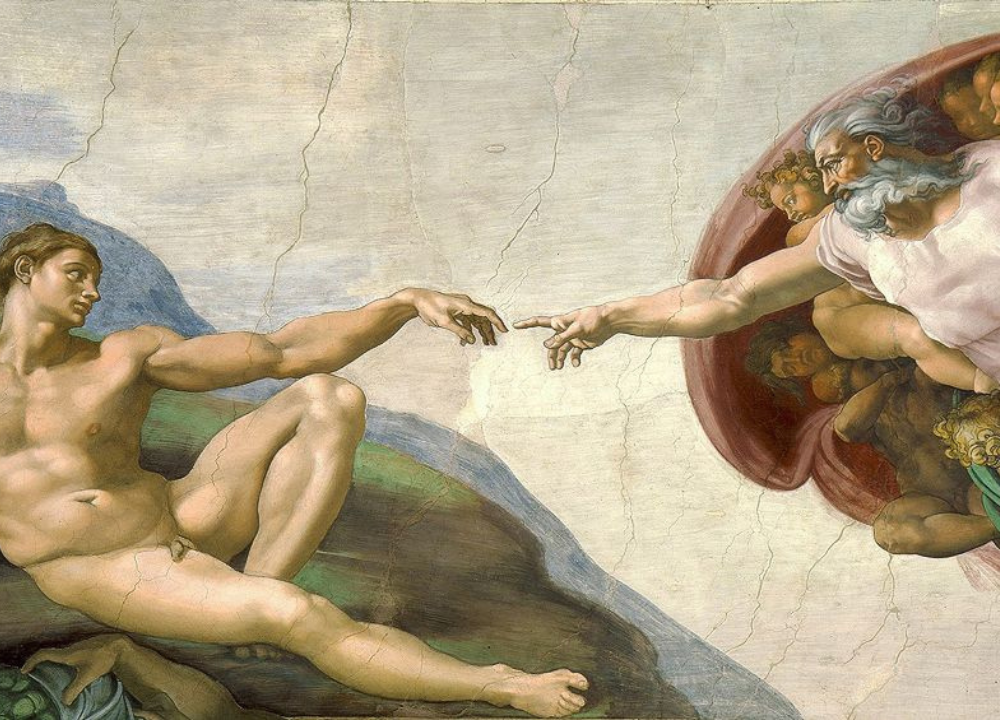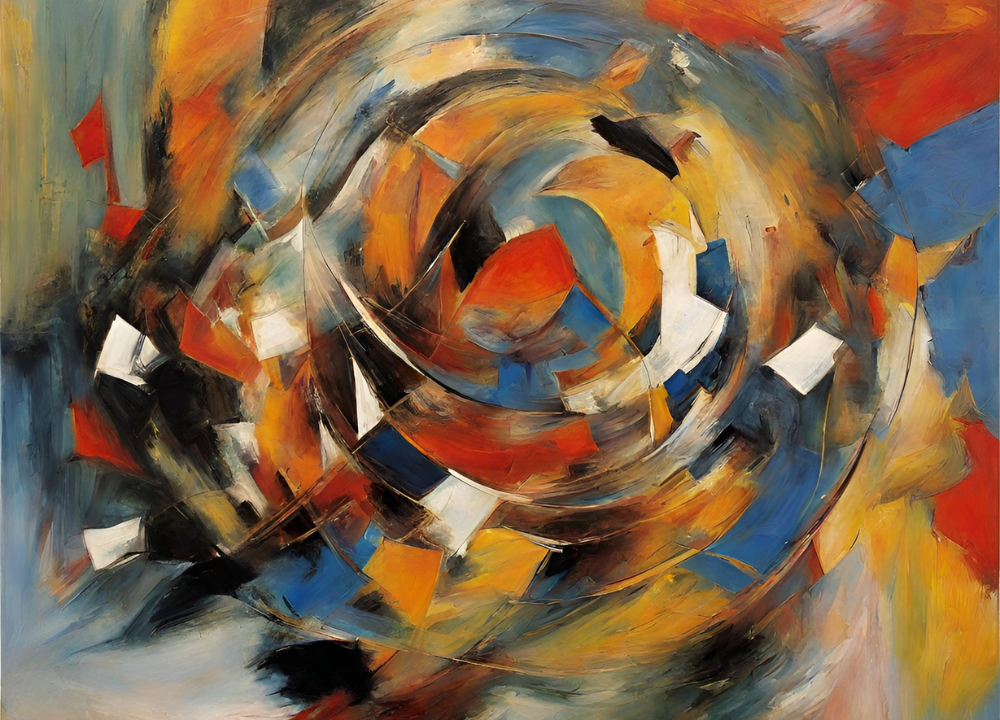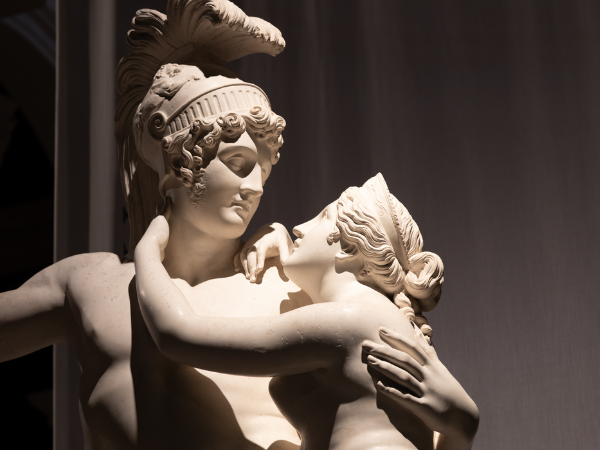The Renaissance was a pivotal period in art history. It spanned roughly from the 14th to the 17th century in Europe.
Artists during the Renaissance focused on realism, perspective, and human anatomy. They aimed to capture the beauty of the natural world and the human form with unprecedented accuracy. This era saw the rise of legendary artists like Leonardo da Vinci, Michelangelo, and Raphael.
They utilized techniques such as chiaroscuro and linear perspective to add depth and dimension to their work. The Renaissance also marked a revival of classical themes from ancient Greece and Rome, blending them with contemporary humanist ideals. This period significantly influenced Western art, leaving a lasting legacy of innovation and excellence in artistic expression.
Table of contents

Origins Of Renaissance Art
The Renaissance was a magical period in art history. It saw the rebirth of classical knowledge and skills. This era gave birth to some of the most famous artists and artworks the world has ever seen. The origins of Renaissance art are deeply rooted in the cultural and intellectual environment of the time. Let’s explore the beginnings of this incredible art movement.
Early Renaissance
The Early Renaissance began in the 14th century. It started in Italy, especially in Florence. This period was marked by a renewed interest in the classical art of ancient Greece and Rome. Artists sought to create more realistic and human-centered works. They used new techniques to achieve this goal.
Key characteristics of Early Renaissance art include:
- Use of perspective to create depth
- Focus on human anatomy and proportion
- Incorporation of classical themes and motifs
Notable artists of the Early Renaissance:
| Artist | Famous Work |
|---|---|
| Giotto | The Lamentation |
| Masaccio | The Holy Trinity |
| Donatello | David |
Giotto is often considered the father of Renaissance art. He broke away from the flat, symbolic style of medieval art. His paintings showed a more lifelike and three-dimensional approach. Masaccio followed in Giotto’s footsteps. He introduced linear perspective, a technique that gave depth to his paintings. Donatello revolutionized sculpture with his realistic forms and expressive detail.
High Renaissance
The High Renaissance took place in the late 15th and early 16th centuries. This period is often seen as the peak of Renaissance art. Artists of the High Renaissance mastered the techniques developed during the Early Renaissance. They created works of incredible beauty and sophistication.
Key characteristics of High Renaissance art include:
- Perfected use of perspective
- Greater emphasis on harmony and balance
- Use of light and shadow to enhance realism
Notable artists of the High Renaissance:
| Artist | Famous Work |
|---|---|
| Leonardo da Vinci | Mona Lisa |
| Michelangelo | Sistine Chapel Ceiling |
| Raphael | The School of Athens |
Leonardo da Vinci is perhaps the most famous artist of the Renaissance. His works, like the Mona Lisa, show incredible detail and emotion. Michelangelo was a master of both painting and sculpture. His work on the Sistine Chapel ceiling is a landmark in art history. Raphael was known for his beautiful compositions and graceful figures. His painting, The School of Athens, is a perfect example of High Renaissance art.
Characteristics Of Renaissance Art
The Renaissance era, spanning from the 14th to the 17th century, marked a rebirth of cultural and artistic endeavors. Renaissance art is renowned for its unique characteristics that broke away from the medieval period’s rigid styles. Artists began to explore new techniques and ideas that brought life and realism to their work. Understanding these key characteristics helps us appreciate the masterpieces from this golden age of art.
Humanism
Humanism played a crucial role in Renaissance art. Artists focused on the human experience, emphasizing individual expression and emotion. They moved away from purely religious themes, celebrating the beauty and complexity of human life. This shift reflected the growing interest in ancient Greek and Roman cultures.
Key features of humanism in Renaissance art include:
- Emphasis on human figures: Artists portrayed human bodies in natural and realistic ways.
- Expression of emotions: Artworks depicted a wide range of human emotions, from joy to sorrow.
- Focus on individualism: Portraits and self-portraits became popular, highlighting the uniqueness of each person.
Examples:
| Artwork | Artist |
|---|---|
| The Birth of Venus | Sandro Botticelli |
| Mona Lisa | Leonardo da Vinci |
Realism
Realism transformed the way artists represented the world around them. They aimed to create lifelike images by paying close attention to detail and using techniques that mimicked natural light and shadow. This approach helped viewers connect with the artwork on a deeper level.
Important aspects of realism in Renaissance art include:
- Detailed textures: Artists meticulously rendered textures, from soft skin to rough cloth.
- Natural light and shadow: Techniques like chiaroscuro created depth and dimension.
- True-to-life proportions: Figures were drawn with accurate proportions and anatomy.
Examples:
| Artwork | Artist |
|---|---|
| The Last Supper | Leonardo da Vinci |
| School of Athens | Raphael |
Perspective
Perspective revolutionized Renaissance art by introducing three-dimensional space on a flat surface. Artists used mathematical principles to create the illusion of depth, making scenes appear more realistic and immersive.
Key elements of perspective in Renaissance art include:
- Linear perspective: Lines converge at a single point on the horizon, known as the vanishing point.
- Aerial perspective: Colors and details fade with distance, mimicking the way we see the world.
- Foreshortening: Objects appear shorter when viewed at an angle, enhancing the sense of depth.
Examples:
| Artwork | Artist |
|---|---|
| The Delivery of the Keys | Pietro Perugino |
| Trinity | Masaccio |
Key Artists Of The Renaissance
The Renaissance was a time of great change in art. Key artists created stunning works that still amaze us today. Three of the most famous artists of this time are Leonardo da Vinci, Michelangelo, and Raphael. Each of these artists brought something unique to the world of art, and their works continue to inspire people all over the globe.
Leonardo Da Vinci
Leonardo da Vinci is one of the most famous artists of the Renaissance. He was a true genius, excelling not only in painting but also in science and engineering. His most famous painting is the Mona Lisa, which is known for its mysterious smile.
Leonardo’s art is known for its incredible detail and lifelike quality. Some of his other well-known works include:
- The Last Supper
- Vitruvian Man
- Lady with an Ermine
Leonardo’s use of light and shadow, known as chiaroscuro, made his paintings look three-dimensional. He also used a technique called sfumato, which involved blending colors to create a soft, blurred effect.
| Painting | Year |
|---|---|
| Mona Lisa | 1503-1506 |
| The Last Supper | 1495-1498 |
Michelangelo
Michelangelo was another key artist of the Renaissance. He was a master sculptor, painter, and architect. His most famous work is the ceiling of the Sistine Chapel in the Vatican.
Michelangelo’s sculptures are known for their realistic detail and powerful emotion. Some of his most famous sculptures include:
- David
- Pieta
- Moses
Michelangelo’s paintings are also full of life and emotion. He used bold colors and dramatic poses to create a sense of movement and energy in his works.
| Sculpture | Year |
|---|---|
| David | 1501-1504 |
| Pieta | 1498-1499 |
Raphael
Raphael was known for his beautiful paintings and graceful style. His works are admired for their clarity and balance. One of his most famous paintings is The School of Athens.
Raphael’s art is characterized by its serene beauty and harmonious composition. Some of his other well-known works include:
- The Sistine Madonna
- The Transfiguration
- Madonna and Child
Raphael was also known for his skill in creating realistic portraits. His use of perspective and attention to detail made his paintings look almost lifelike.
| Painting | Year |
|---|---|
| The School of Athens | 1509-1511 |
| The Sistine Madonna | 1512 |

Themes In Renaissance Art
The Renaissance period witnessed an explosion of creativity and innovation in art. Themes in Renaissance Art were diverse and often reflected the cultural and intellectual shifts of the time. Artists explored religious themes, mythology, classical subjects, and portraits. These themes illustrate the rich tapestry of Renaissance society and its values.
Religious Paintings
Religious paintings were among the most prominent themes in Renaissance art. These works were often commissioned by the Church or wealthy patrons. Artists aimed to convey deep spiritual messages through their paintings.
Key elements in religious paintings included:
- Biblical scenes: Stories from the Bible were depicted with great detail.
- Saints and Martyrs: Many paintings celebrated the lives of saints.
- The Virgin Mary: Often shown in tender moments with Jesus.
Here is a table summarizing some famous religious paintings:
| Painting | Artist | Year |
|---|---|---|
| The Last Supper | Leonardo da Vinci | 1498 |
| The Sistine Chapel Ceiling | Michelangelo | 1512 |
| The School of Athens | Raphael | 1511 |
Religious themes in Renaissance art were not just about faith. They also showcased the artists’ technical skills and their ability to convey complex emotions and stories.

Mythology And Classical Themes
Mythology and classical themes became popular during the Renaissance. These subjects reflected the renewed interest in ancient Greece and Rome. Artists drew inspiration from myths and legends, portraying gods, goddesses, and epic tales.
Some famous examples include:
- The Birth of Venus by Sandro Botticelli: Depicts Venus emerging from the sea.
- Primavera by Botticelli: Shows various mythological figures in a lush garden.
- The Triumph of Galatea by Raphael: A scene from the story of the nymph Galatea.
These artworks often had rich symbolism and conveyed moral lessons. They also allowed artists to experiment with human anatomy, perspective, and composition.
Mythological themes provided a platform for artists to explore beauty, heroism, and the human condition. The use of classical themes helped to connect the contemporary world with the ancient past, creating a sense of continuity and cultural heritage.
Portraits
Portraits became an important genre during the Renaissance. They were commissioned by wealthy individuals, nobility, and merchants. Portraits served to display status, wealth, and power.
Key features of Renaissance portraits included:
- Realism: Artists aimed to capture the true likeness of the subject.
- Detail: Fine details in clothing, jewelry, and background elements.
- Expression: Conveyed the personality and mood of the sitter.
Some renowned Renaissance portraits are:
- Mona Lisa by Leonardo da Vinci
- Portrait of Baldassare Castiglione by Raphael
- Self-Portrait by Albrecht Dürer
Portraits not only documented the appearance of individuals but also highlighted their social standing and personal achievements. The use of light, shadow, and perspective in these paintings showcased the artists’ mastery and innovation.
Through these themes, Renaissance art captured the essence of the era, blending religious devotion, classical knowledge, and personal identity.
Techniques And Materials Used
The Renaissance period was a time of great artistic achievement. Artists developed unique techniques and used various materials to create their masterpieces. These methods played a crucial role in shaping the art of the time. Below, we explore some of the most popular techniques and materials used in Renaissance art.
Oil Painting
Oil painting became extremely popular during the Renaissance. Artists used oil paint because it dried slowly, allowing for more detailed work. This technique helped them create vibrant and realistic images.
Here are some key features of oil painting:
- Slow Drying Time: Allows artists to make changes over several days.
- Vivid Colors: Oil paints provide a wide range of rich colors.
- Layering: Artists could paint in layers, adding depth and texture.
A typical oil painting process involved:
- Preparing the canvas with a gesso primer.
- Sketching the basic outline of the image.
- Applying an underpainting to establish values and tones.
- Layering colors and details using oil paints.
- Applying glazes to enhance color and luminosity.
Oil paints were often made from natural pigments mixed with linseed oil. This combination gave the paint its smooth and glossy finish.
Tempera Painting
Tempera painting was another important technique in Renaissance art. Artists used tempera paint, which was made by mixing pigment with a water-soluble binder, usually egg yolk. This method created a durable and long-lasting paint.
Key aspects of tempera painting include:
- Quick Drying Time: Tempera paint dries quickly, so artists had to work fast.
- Matte Finish: The paint dries to a matte finish, giving the artwork a distinct look.
- Fine Details: Tempera allowed artists to paint fine details and sharp lines.
Typical steps in tempera painting involved:
- Preparing the wooden panel with gesso.
- Drawing the initial design using charcoal.
- Applying layers of tempera paint with small, precise brushstrokes.
- Building up colors and details gradually.
- Adding final touches and highlights.
Artists often used a limited palette of colors, which they mixed to create various shades. This technique required great skill and precision.
Fresco Painting
Fresco painting was a popular technique for decorating large walls and ceilings. Artists applied pigments to freshly laid wet plaster, allowing the paint to become part of the wall surface. This method created highly durable artworks.
Important features of fresco painting include:
- Durability: Frescoes are long-lasting and resistant to weathering.
- Large Scale: Ideal for covering large wall surfaces.
- Integration with Architecture: Frescoes become part of the building’s structure.
The fresco process typically involved:
- Preparing the wall surface with a rough layer of plaster.
- Applying a smooth layer of wet plaster.
- Transferring the design onto the wet plaster.
- Applying pigments mixed with water to the wet plaster.
- Working in sections to ensure the plaster remained wet.
Artists had to work quickly and accurately, as the plaster dried fast. The result was a vibrant and durable mural that could last for centuries.
Impact And Influence Of Renaissance Art
The Renaissance period brought a great transformation in the art world. This era marked a rebirth of classical learning and wisdom. It significantly impacted and influenced the development of Western art. Renaissance art is known for its detailed human figures, perspective, and use of light and shadow. This period produced some of the greatest artists and works in history.
Revolution In Art
The Renaissance revolutionized art in many ways. Artists explored new techniques and perspectives. They began to portray human figures more realistically. This brought a sense of depth and dimension to their work.
Key changes included:
- Linear Perspective: Artists like Brunelleschi introduced linear perspective. This technique added depth to paintings.
- Chiaroscuro: Use of light and shadow to create contrast. This made figures look more three-dimensional.
- Realism: Detailed anatomy and natural poses. Artists studied the human body to improve their skills.
Renaissance artists also started using oil paints. This allowed for richer colors and finer details. The use of frescoes became popular in large-scale murals. Artists like Michelangelo and Raphael excelled in this technique.
Here is a quick comparison of Medieval and Renaissance art:
| Aspect | Medieval Art | Renaissance Art |
|---|---|---|
| Perspective | Flat and two-dimensional | Depth and three-dimensional |
| Human Figures | Stylized and symbolic | Realistic and detailed |
| Materials | Tempera on wood | Oil on canvas |
Legacy In Western Art
The Renaissance left a lasting legacy in Western art. Its influence can be seen in various art movements. The techniques and styles developed during this period continued to inspire artists for centuries.
Some key legacies include:
- Continued Use of Perspective: Renaissance perspective techniques remain fundamental in art education.
- Humanism: Focus on human experience and emotions. This became a central theme in Western art.
- Classical Themes: Revival of Greek and Roman mythology. These themes persisted in Western art.
Renaissance masterpieces still draw admiration and study. Works like Leonardo da Vinci’s “Mona Lisa” and Michelangelo’s “David” are iconic. They set high standards for artistic excellence.
Art academies established during and after the Renaissance helped formalize art education. This ensured the techniques and principles of Renaissance art were passed down through generations.
Here is a list of some notable Renaissance artists and their contributions:
- Leonardo da Vinci: Master of anatomy and perspective. Famous works include the “Mona Lisa” and “The Last Supper”.
- Michelangelo: Sculptor and painter. Known for the Sistine Chapel ceiling and the statue of “David”.
- Raphael: Renowned for his frescoes in the Vatican. His work “The School of Athens” is a prime example of Renaissance art.
Frequently Asked Questions
What Defines Renaissance Art Style?
Renaissance art is characterized by realism, perspective, and attention to human anatomy. Artists focused on naturalism, proportion, and light. This period saw a revival of classical themes and techniques.
Who Were Famous Renaissance Artists?
Famous Renaissance artists include Leonardo da Vinci, Michelangelo, Raphael, and Titian. Their works exemplify the period’s focus on realism and humanism. Each artist made significant contributions to painting, sculpture, and architecture.
How To Identify Renaissance Art?
Renaissance art can be identified by its use of perspective, detailed anatomy, and classical themes. Look for realistic human figures and balanced compositions. The use of light and shadow, known as chiaroscuro, is also a key feature.
What Techniques Were Used In Renaissance Painting?
Renaissance painters used techniques like perspective, chiaroscuro, and sfumato. Perspective creates depth, chiaroscuro adds contrast, and sfumato softens edges. These methods enhanced realism and emotional expression in their works.
Conclusion
Renaissance art continues to inspire and captivate. Its techniques and beauty remain timeless. Studying these masterpieces enriches our understanding. Creating your own piece can be deeply rewarding. Embrace the spirit of the Renaissance. Let your creativity flourish and bring history to life on your canvas.
Keep painting and exploring this fascinating era.




